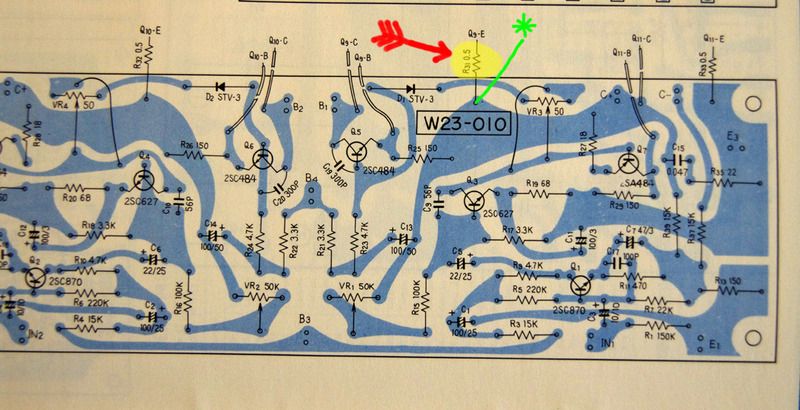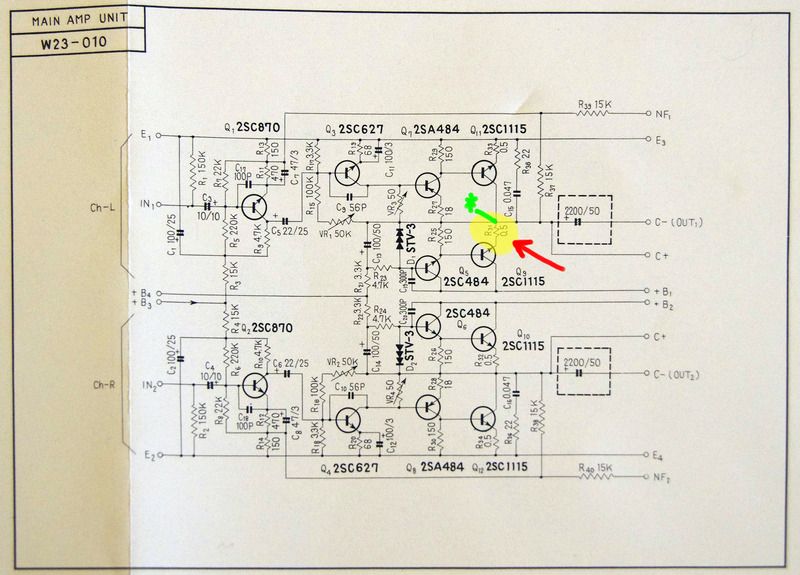JamVal
Addicted Member
I was checking and setting bias on a SX-9000 - according to a procedure I found on another thread here.
To make a long story short I taped wire leads to the R31 and R32 solder joints on the PC board to facilitate use of mini-grabbers. For some reason the lead on that side of the resistor is insulated.
The following layout shows where I connected a wire lead (green line) for the black lead of the DMM, and just attached the DMM red grabber to the other side of the resistor which isn't insulated.

This was all going well. Checking for 15mv. Left side was reading high - 40mv. So I adjusted to about 16mv - close as I could get using trim pot Vr3.
As I disconnected the black mini-grabber from my make shift wire lead, the wire sprung away and touched the chassis and a spark flew. Now I get a constant reading of 4.0mv across the R31 resistor for the left channel, adjusting Vr3 for the left channel does nothing - 4.0mv no matter where I set Vr3. So I fried something - but what?
Here is a schematic of the main amp board with the R31 resistor highlighted in yellow and showing a green line where I attached the lead that sparked to the chassis.

I could kick myself. Tried to be so careful. Exercised and cleaned the trim pots without power, then powered it up on a dim bulb tester to make sure before tinkering. One slip and POP!
To make a long story short I taped wire leads to the R31 and R32 solder joints on the PC board to facilitate use of mini-grabbers. For some reason the lead on that side of the resistor is insulated.
The following layout shows where I connected a wire lead (green line) for the black lead of the DMM, and just attached the DMM red grabber to the other side of the resistor which isn't insulated.

This was all going well. Checking for 15mv. Left side was reading high - 40mv. So I adjusted to about 16mv - close as I could get using trim pot Vr3.
As I disconnected the black mini-grabber from my make shift wire lead, the wire sprung away and touched the chassis and a spark flew. Now I get a constant reading of 4.0mv across the R31 resistor for the left channel, adjusting Vr3 for the left channel does nothing - 4.0mv no matter where I set Vr3. So I fried something - but what?
Here is a schematic of the main amp board with the R31 resistor highlighted in yellow and showing a green line where I attached the lead that sparked to the chassis.

I could kick myself. Tried to be so careful. Exercised and cleaned the trim pots without power, then powered it up on a dim bulb tester to make sure before tinkering. One slip and POP!


